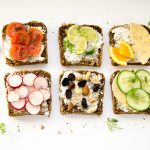Mastering Knife Skills: Key Tips for Efficient Cooking
Practice and Mastery
Developing knife skills is crucial for efficient meal preparation. Incorporating routine practice and tracking progress can greatly enhance one’s proficiency.
Creating a Practice Routine
Establishing a structured practice routine is essential for honing knife skills. Setting aside regular time slots each week is beneficial. During these sessions, it’s important to focus on a variety of cutting techniques. Techniques may include dicing, slicing, mincing, and julienning. Practicing with different types of vegetables and proteins can add variety and help build versatile skills.
Using proper grip and posture during these sessions is fundamental. Ensuring the knife is always sharp minimizes the risk of accidents and increases efficiency. Beginners might start with more straightforward tasks and gradually move to more complex techniques as confidence grows. Repetition and consistency are key elements in improving these skills.
Measuring Improvement
Tracking progress is vital for achieving mastery in knife skills. One method is to time different cutting tasks and note the speed at which they are completed effectively. For instance, slicing a particular vegetable faster over time can indicate improvement. Besides speed, assessing uniformity and accuracy in cuts is equally important.
Documenting these practices helps in identifying areas that need more focus. Additionally, before-and-after photographs of cut ingredients can visually demonstrate progress. Considering feedback from more experienced cooks provides valuable insight into refining techniques. Progress assessment helps in staying motivated and focused on further skill enhancement.
Choosing the Right Cutting Surface
Selecting the appropriate cutting surface is essential for both knife safety and food hygiene. Different types of cutting boards offer unique advantages, while proper maintenance extends their lifespan and ensures cleanliness.
Types of Cutting Boards
Cutting boards come in various materials, each with distinct characteristics. Wooden boards, often made of maple or walnut, are popular due to their durability and ability to protect knife blades. They possess a self-healing quality that helps reduce knife marks. Plastic boards are a good choice for those seeking an easy-to-clean and versatile option. They can be sanitized in the dishwasher, making them suitable for cutting raw meats where cross-contamination is a concern.
Bamboo is a sustainable choice, harder than wood, yet gentle on knives. Glass cutting boards, although stylish and easy to clean, are hard surfaces that can dull knives quickly and are less favorable among cooking enthusiasts. Choosing a board depends not only on personal preference but also on how the board will be used, considering the types of foods being prepared and overall kitchen requirements.
Cutting Board Maintenance
Maintaining a cutting board involves regular cleaning and occasional conditioning. Wooden boards should be hand-washed with mild soap and warm water, then dried immediately to prevent warping. Regular application of mineral oil is recommended to keep the wood moisturized and less prone to drying and cracking. Plastic boards can be washed in the dishwasher but should be checked for deep cuts where bacteria might reside.
It’s crucial to replace worn cutting boards, especially if deep grooves develop that are hard to clean. Using separate boards for different food groups, like raw meat and vegetables, further reduces the risk of cross-contamination. Proper maintenance habits not only extend the life of the cutting board but also help maintain a sanitary cooking environment.



